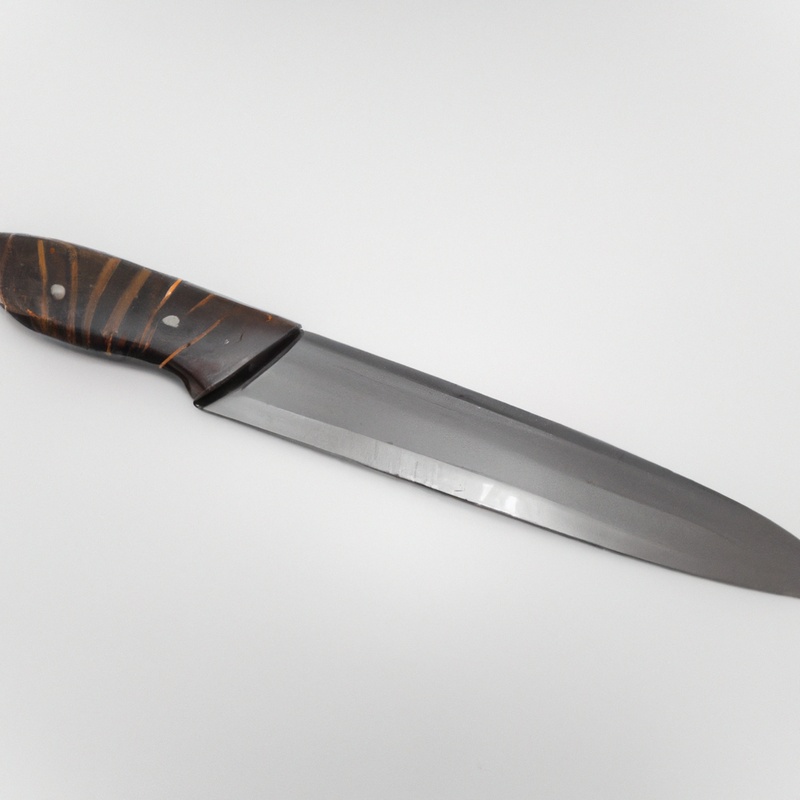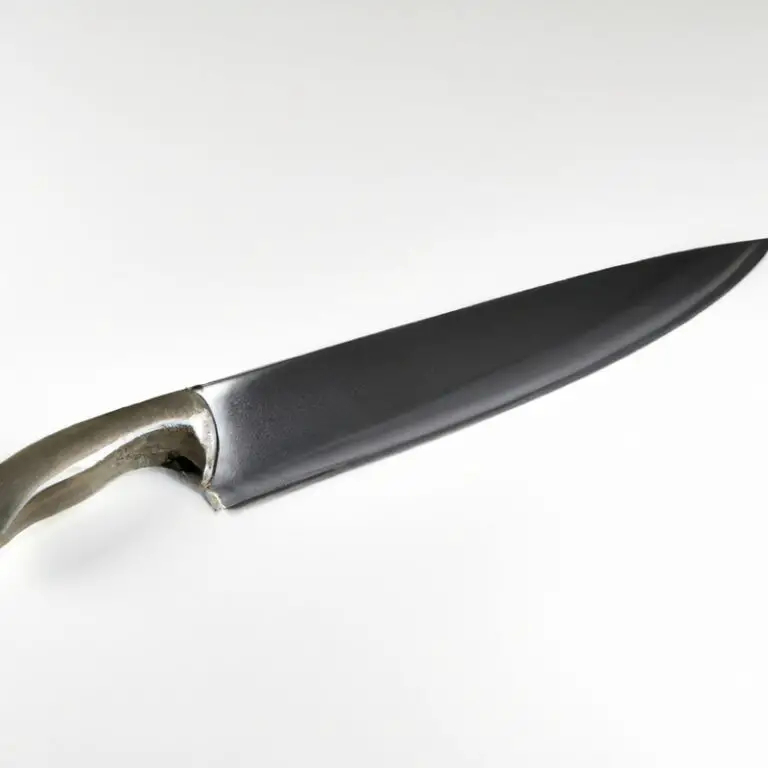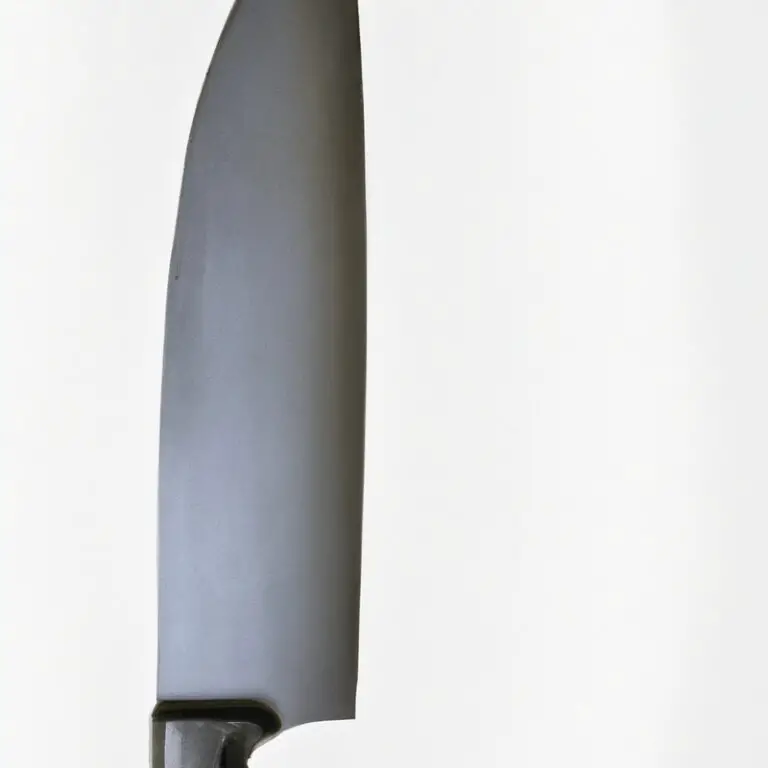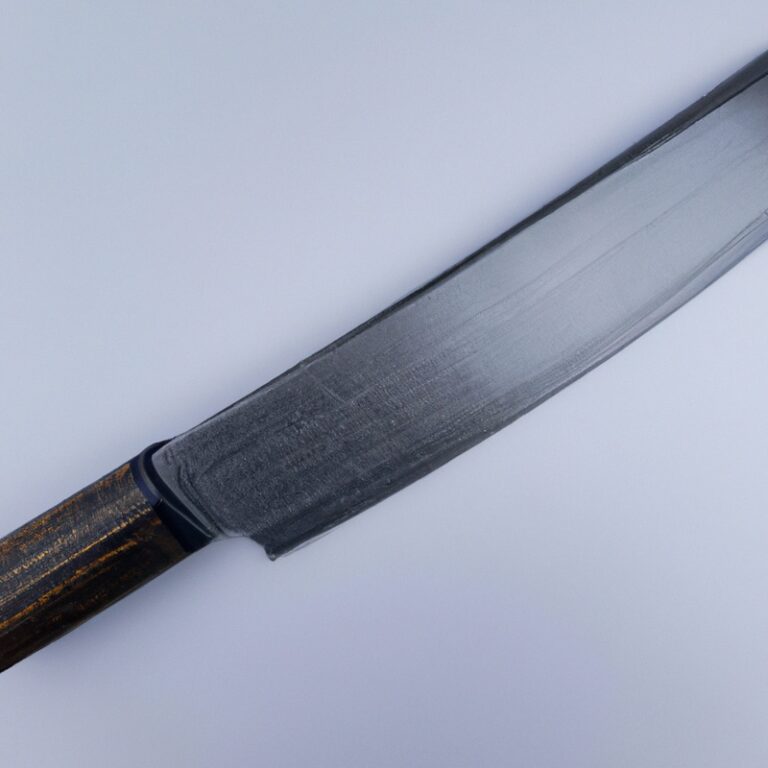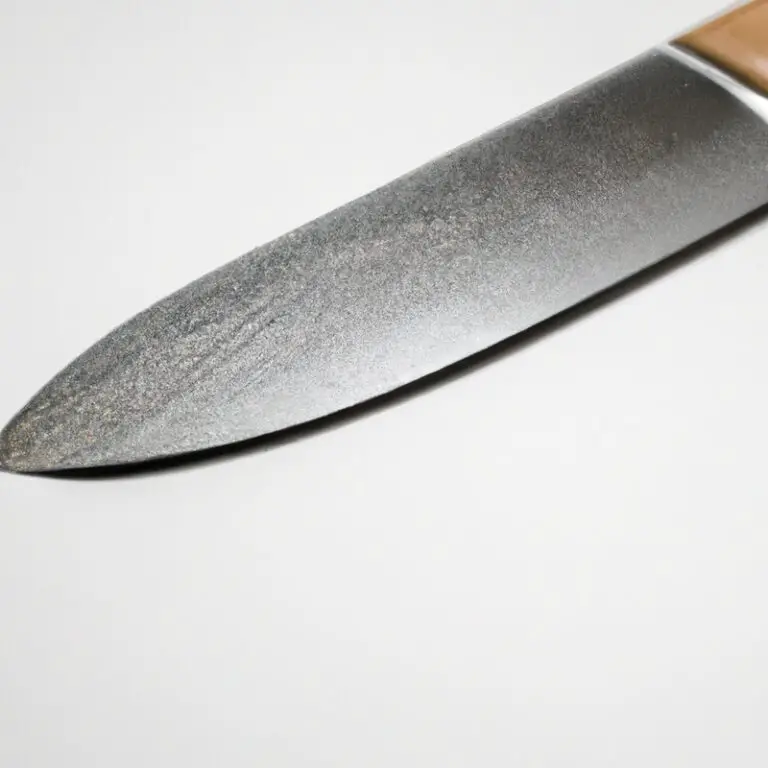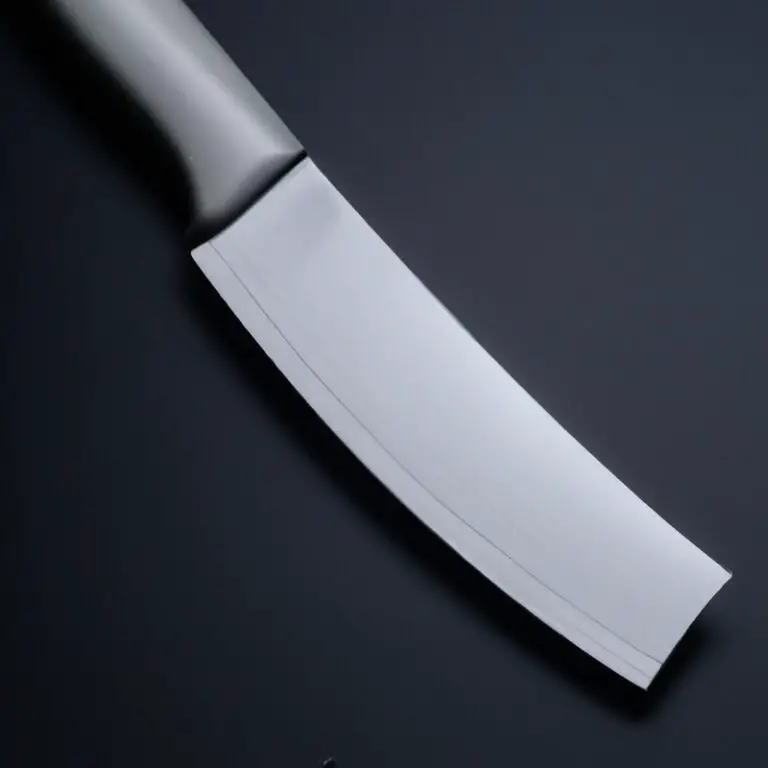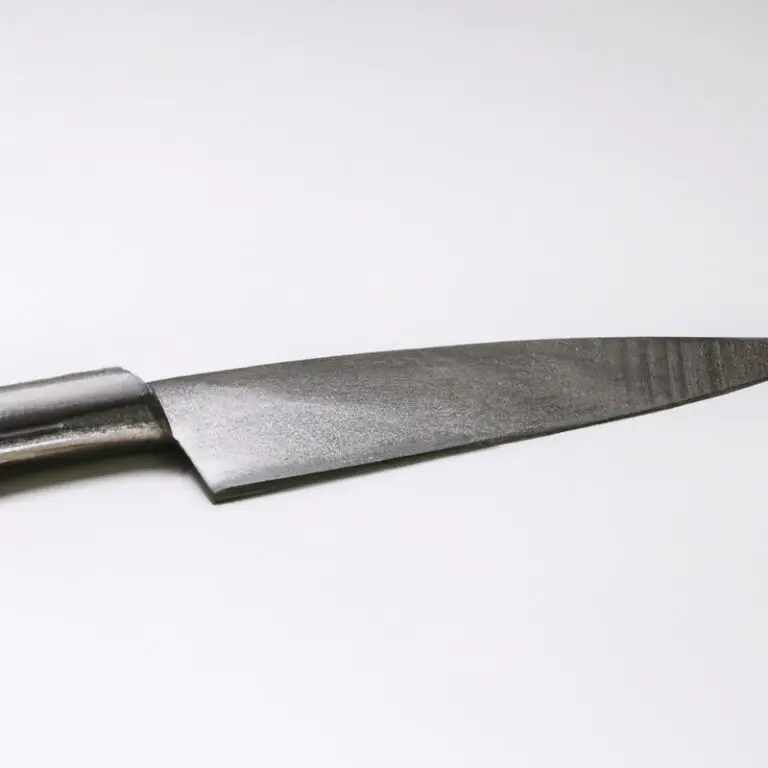How To Sharpen a Gyuto Knife? Easy!
Key Takeaways:
- A properly sharpened Gyuto knife requires the right technique, equipment, and knowledge of the blade’s edge angles.
- Regular maintenance is key to keeping your Gyuto knife sharp and in good condition, including honing and cleaning.
- Practice safe handling and sharpening procedures to avoid injury and ensure optimal results.
- Consistency and patience are essential in sharpening a Gyuto knife, but with the right approach, anyone can become proficient.
A blunt Gyuto knife can be the difference between a perfectly sliced fillet and a frustrating mess. Whether you’re a professional chef or a home cook, a sharp knife is a must-have in your kitchen arsenal.
But the process of honing that perfect edge can be intimidating, especially for those new to knife sharpening.
Fear not! In this article, I’ll guide you through the process of sharpening a Gyuto knife step-by-step using a whetstone. From understanding the knife’s anatomy and the correct sharpening angle to maintaining that sharp edge post-sharpening, you’ll be slicing, dicing, and chopping like a pro in no time!
| Step | Description |
|---|---|
| 1 | Clean the blade. |
| 2 | Find the right angle for sharpening. |
| 3 | Sharpen one side of the blade. |
| 4 | Repeat on the other side of the blade. |
| 5 | Sharpen the blade at the tip. |
| 6 | Sharpen the heel of the blade. |
| 7 | Hone the blade with a honing rod. |
| 8 | Check the sharpness. |
The importance of a sharp Gyuto knife for professional chefs and home cooks alike
A sharp Gyuto knife is essential for both professional chefs and home cooks. A dull knife can lead to accidents, uneven cuts, and frustration in the kitchen.
A sharp edge is necessary not only for efficiency and precision but also for safety.
It reduces the amount of force needed to cut through ingredients, preventing slips that could lead to injuries. A sharp Gyuto knife also allows for more control and better presentation.
Whether you are a professional chef or a home cook, investing in a high-quality Gyuto knife and sharpening it regularly is important to make your kitchen tasks easier and enjoyable.
Understanding the anatomy of a Gyuto knife and its edge geometry
To sharpen a Gyuto knife, it is important to understand its anatomy and edge geometry. Gyuto knives are Japanese chef’s knives with a blade length of 210mm to 270mm.
These knives are versatile and can be used for slicing, dicing, and chopping various ingredients.
The blade of a Gyuto knife has a flat profile, and its edge is angled at around 15 to 20 degrees. The blade is thin and sharp, making it ideal for precise cuts.
The blade is also made of high-quality steel, which makes sharpening a Gyuto knife more accessible than other knives.
The edge geometry of a Gyuto knife is essential in achieving the correct angle when sharpening. The edge should have a convex shape, which means that the sides of the blade curve outward towards the edge.
This shape helps to retain the knife’s sharpness for longer and makes it easier to maintain its edge over time.
In addition to the blade and edge geometry, the handle of a Gyuto knife is also an essential part of its anatomy. The handle should provide a comfortable grip and be made of durable materials that can withstand the rigors of regular use.
Overall, having a basic understanding of the anatomy and edge geometry of a Gyuto knife is crucial in maintaining its sharpness and maximizing its performance in the kitchen.
The different types of sharpening stones and their grit levels for sharpening a Gyuto knife
When it comes to sharpening your Gyuto knife, using the right type of sharpening stone and grit level is crucial for achieving optimal results. There are three main types of sharpening stones available, each with its own unique characteristics:
- Diamond Stones: These stones are made of industrial-grade diamonds and are the hardest and most durable option. They are perfect for repairing and reprofiling damaged or very dull blades. However, their aggressive nature can remove a lot of material quickly, making them less suitable for regular maintenance.
- Ceramic Stones: Ceramic stones are made of a ceramic abrasive material and are great for sharpening and refining edges. They are less aggressive than diamond stones and are better suited for regular maintenance. However, they can be more brittle and prone to cracking.
- Water Stones: These are natural or synthetic stones that use water as a lubricant for sharpening. They come in a range of grit levels, from coarse to fine, and are suitable for both repairing and regular maintenance. It is important to note that water stones require periodic flattening to maintain their flat surface.
Each of these types of stones comes in different grit levels, which refers to the coarseness of the stone’s abrasive surface. The lower the number, the coarser the stone, and the higher the number, the finer the stone.
Generally, coarser grits are used for repairing and reshaping damaged edges, while finer grits are used for honing and polishing.
For a Gyuto knife, a medium grit stone between 1000 and 4000 grit is recommended for regular maintenance. However, it may be necessary to use a coarser stone, such as a 400 to 800 grit stone, for repairing chips and nicks in the blade.
After using a coarser stone, it is essential to refine the edge using a higher grit stone.
Selecting the right type of sharpening stone and grit level is essential for maintaining the sharpness of your Gyuto knife. Whether you choose a diamond, ceramic, or water stone, make sure to use the appropriate grit level for your specific needs.
Techniques for setting the correct sharpening angle on a Gyuto knife
To set the correct sharpening angle on a Gyuto knife, it’s essential to first understand the knife’s edge geometry. The ideal angle for sharpening a Gyuto knife is between 15 and 20 degrees.
To find the correct angle, place the knife’s blade on the sharpening stone and lift it to an angle of 15 degrees.
Then slowly increase the angle until you feel a slight resistance, indicating the correct sharpening angle has been reached. It’s also important to maintain a consistent angle throughout the sharpening process.
One way to ensure consistency is to use a sharpening guide, which attaches to the blade to help maintain the correct angle.
Alternatively, you can hold the blade freehand, making sure to keep the same angle throughout the process. Lastly, it’s crucial to use a light touch and avoid putting too much pressure on the blade while sharpening.
Applying too much pressure can damage the blade and wear down the sharpening stone too quickly.
By following these techniques, you can set the correct sharpening angle effectively and ensure your Gyuto knife stays sharp.
Step-by-step guide to sharpening a Gyuto knife using a whetstone
Step-by-step guide to sharpening a Gyuto knife using a whetstone:
- Soak the whetstone in water for 10-15 minutes before use.
- Secure the whetstone on a flat surface, like a countertop or table, with a damp towel or non-slip mat.
- Hold the Gyuto knife firmly with your dominant hand and place the tip of the blade on the stone.
- Angle the blade at a 15-20 degree angle, with the sharpened edge facing away from you.
- Apply moderate pressure and move the blade back and forth along the stone using a smooth, even motion.
- Continue this process for 10-15 strokes or until you feel a slight burr on the opposite side of the blade.
- Repeat step 5 and 6 on the other side of the blade.
- Once both sides are sharpened, move to a finer grit stone and repeat the process until you achieve your desired sharpness.
- Clean the blade with a damp cloth and dry thoroughly.
- Hone the blade with a honing rod or strop to maintain its sharpness between sharpening.
Sharpening a Gyuto knife may take some time and practice to perfect. Be patient and focused, as rushing the process can lead to an unsatisfactory result.
With regular maintenance and proper sharpening techniques, your Gyuto knife will maintain its sharpness and be a reliable tool in your kitchen.
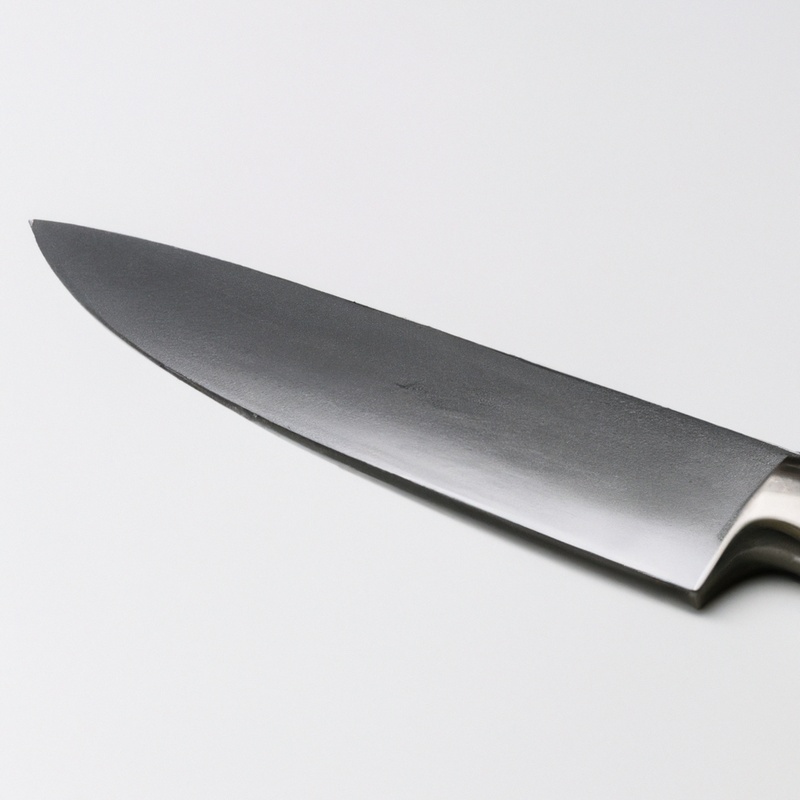
Tips for maintaining the sharpness of a Gyuto knife post-sharpening
Once you have sharpened your Gyuto knife, it’s essential to maintain its sharpness. Here are some tips for maintaining the sharpness of your Gyuto knife:
- Clean the blade: After using the knife, always clean it with warm water and soap. Dry it thoroughly before storing it.
- Store correctly: A Gyuto knife should be stored in a knife block or a knife sheath to prevent it from making contact with other objects that could dull its edge.
- Use a honing rod: A honing rod can be used to realign and maintain the edge of a Gyuto knife in between sharpenings.
- Avoid hard surfaces: Cutting on hard surfaces like glass, ceramic, or stone can chip and damage your blade’s edge. Always cut on a soft surface like a wooden or plastic cutting board.
- Avoid frozen food: It’s best to avoid cutting through frozen food as it can damage your knife’s edge. Allow the food to thaw before cutting.
By following these tips, your Gyuto knife will remain sharp and perform optimally for an extended period.
The role of honing and stropping in keeping a Gyuto knife sharp
Honing and stropping are essential steps to maintaining the sharpness of a Gyuto knife between sharpenings. Honing helps to realign the blade’s edge, while stropping helps to polish and refine it.
Honing is done using a honing rod or steel.
Hold the rod vertically and place the knife blade at a 20-degree angle against the rod. Swipe the blade along the rod in a downward motion, starting at the base of the blade and continuing to the tip.
Repeat this process on the other side of the blade.
It’s important to repeat this step regularly, as daily use can cause the blade to lose its sharpness. Stropping is done using a leather strop with a honing compound applied to it.
Place the blade flat on the strop and using a smooth, back and forth motion, pull the blade towards the opposite end of the strop, then flip the knife over and repeat the process on the other side.
This step is done less frequently than honing and when the blade starts to lose its sharpness. By regularly honing and stropping a Gyuto knife, its sharpness is maintained for longer periods, reducing the number of times it needs to be sharpened.
Common mistakes to avoid while sharpening a Gyuto knife
Common mistakes to avoid while sharpening a Gyuto knife include:
- Using the wrong sharpening angle: It’s important to choose the correct angle for your knife, as the wrong angle can lead to a dull or uneven edge. The angle for a Gyuto knife typically ranges from 15-20 degrees.
- Applying too much pressure: Excessive pressure can cause uneven wear and tear on the knife’s edge, leading to a shorter lifespan. Instead, use a light and even pressure when sharpening.
- Skipping grit levels: Skipping grit levels on your sharpening stone can cause unnecessary damage to the blade. It’s recommended to start with a coarser grit and work your way up to a finer grit.
- Overlapping strokes: Overlapping strokes can create an uneven edge and cause damage to your knife. Ensure you follow a consistent angle and direction for each stroke.
- Neglecting the burr: The burr is a tiny wire-like edge that forms on the opposite side of the blade. Neglecting to remove the burr can result in a dull or jagged edge.
By avoiding these common mistakes, you can achieve a sharp and precise edge on your Gyuto knife.
How often should you sharpen a Gyuto knife?
The frequency of sharpening your Gyuto knife ultimately depends on how frequently you use it and what type of material you are cutting. A general rule of thumb is to sharpen your Gyuto knife every three to six months with regular use.
However, some chefs may need to sharpen their Gyuto knife more frequently, while others may only need to do it once or twice a year.
To determine if your Gyuto knife needs sharpening, you can perform a simple test: try slicing through a sheet of paper. If the knife slices through the paper effortlessly, it does not need sharpening.
If the knife struggles to slice through the paper or tears it instead, it’s time to sharpen the blade.
Regular maintenance, honing, and proper cutting techniques can also extend the lifespan of your Gyuto knife’s sharpness, reducing the frequency of sharpening needed. Maintaining a consistent sharpening routine can also help you avoid the need for drastic and time-consuming sharpening sessions in the future.
The benefits of investing in a high-quality Gyuto knife and regular sharpening
Investing in a high-quality Gyuto knife and regular sharpening can have numerous benefits for both professional chefs and home cooks.
- Improved Cutting Efficiency: A sharp Gyuto knife can cut through ingredients easily and precisely, reducing the effort and time required to prepare meals.
- Increased Safety: Dull knives are not only frustrating to use but can also be dangerous, as they require extra force to cut through food. A sharp Gyuto knife, on the other hand, reduces the risk of cuts and injuries.
- Extended Life of the Knife: Regular sharpening can help maintain the knife’s original cutting edge geometry, preventing it from bending, chipping, or becoming uneven. This, in turn, can extend the life of the knife.
- Enhanced Flavor and Presentation: A sharp Gyuto knife can enhance the flavor and appearance of food by minimizing damage to the ingredients and creating clean, precise cuts.
- Saves Money: A high-quality Gyuto knife is an investment that can last for years, especially when maintained through regular sharpening. It can save money in the long run by avoiding the expenses of buying new knives frequently.
Investing in a high-quality Gyuto knife and regular sharpening can benefit both the user and the knife. It can improve cutting efficiency, increase safety, extend the knife’s life, enhance flavor and presentation, and save money.
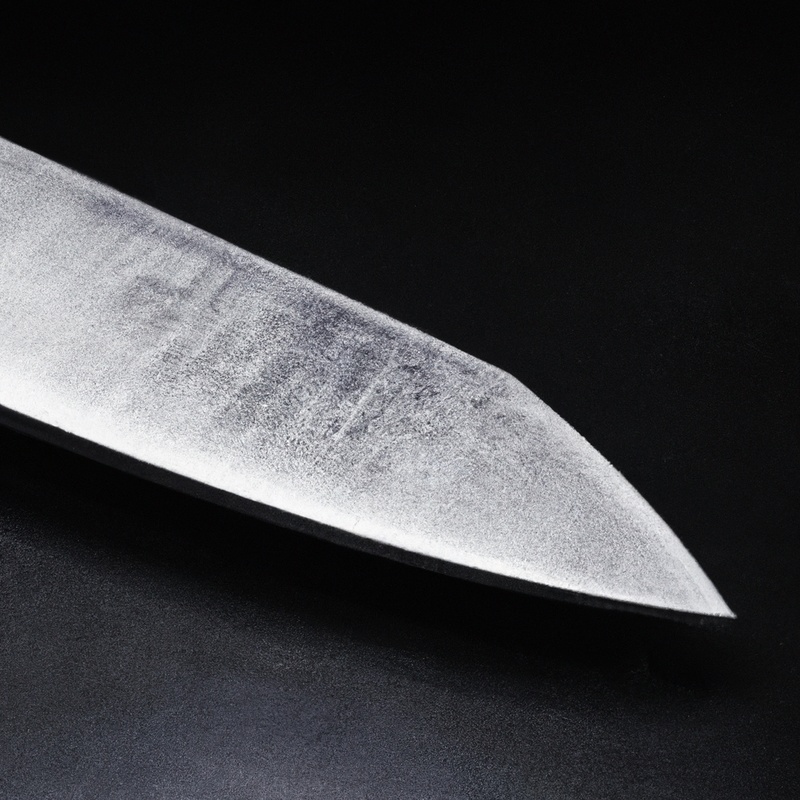
Final Verdict
Sharpening a Gyuto knife is essential for achieving precision in cooking, whether you’re a professional chef or a home cook. By understanding its anatomy, edge geometry, and the essential techniques for sharpening, anyone can maintain the sharpness of their Gyuto knife with ease and efficiency.
Regular sharpening using the right tools and techniques not only guarantees a better cooking experience but also ensures the longevity of the knife.
Remember, honing and stropping play a significant role in maintaining the sharpness, and avoiding common mistakes can prevent damage to your knife. Investing in a high-quality Gyuto knife and sharpening it regularly is a wise choice that every cook should make.
So take the time to sharpen your Gyuto knife, and you’ll experience the difference in your cooking skills, presentation, and overall culinary experience.
Sharpen with confidence and precision, and let your knife be your best ally in the kitchen.

